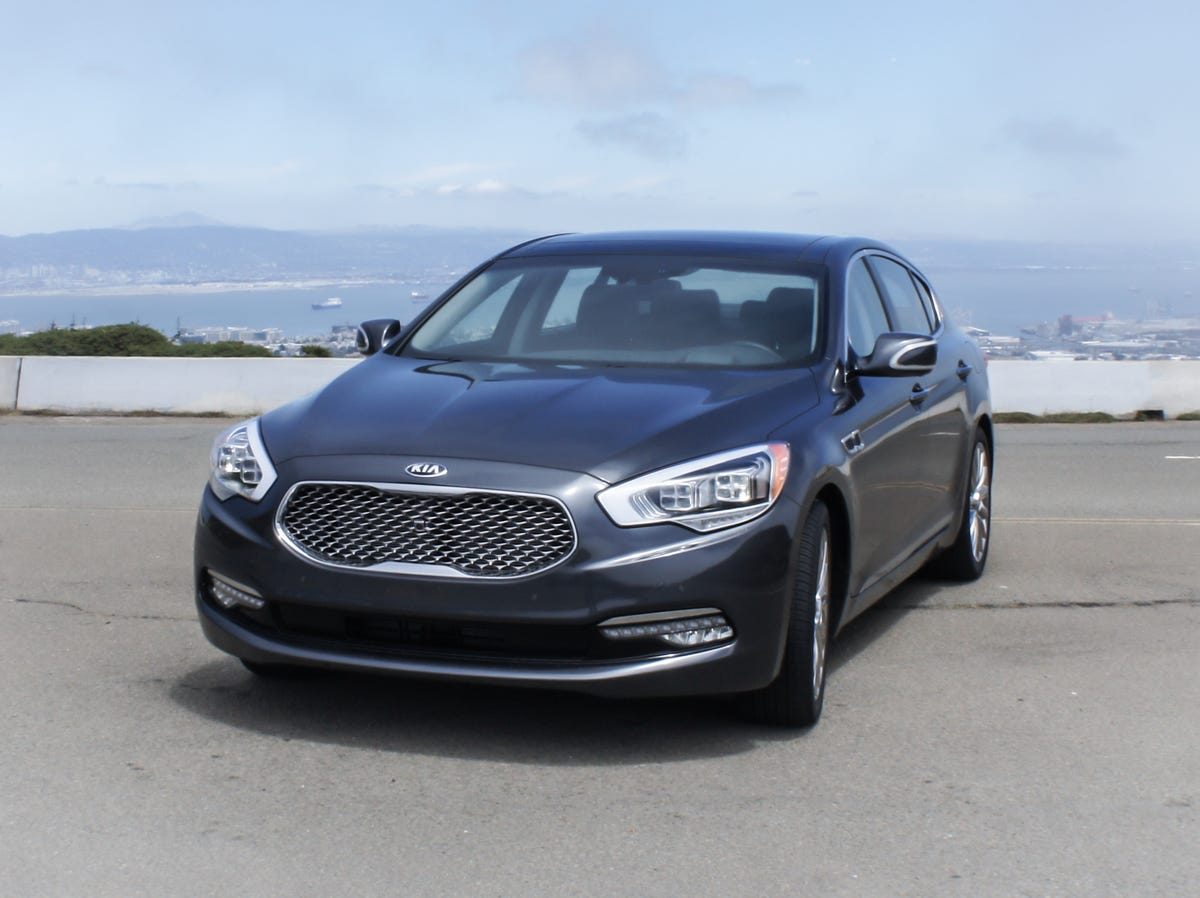Kia K900 makes discount luxury play (pictures)
Kia introduces its big luxury sedan to the US, further trying to break the company's reputation as an economy car builder.

The K900 has been a Korean market car in the luxury segment. Kia brings it to the US to challenge the likes of Lexus and Mercedes-Benz.
The K900 sports Kia styling cues, such as the grille, but its name does not follow the theme set for US models.
To compete in the luxury market, the K900 uses a rear-wheel-drive architecture.
The lack of an adaptive suspension hampers ride quality in the K900.
At 15.9 cubic feet, the trunk provides similar cargo space to a small SUV.
The 5-liter V-8 engine uses direct injection to make 420 horsepower.
LED headlights are a nice, high-tech touch.
19-inch wheels come standard on the K900.
The cabin is nicely appointed, even in base trim.
Seat controls sit on the doors, making them easy to access.
Rear-seat legroom, at 38.2 inches, will accommodate just about any basketball player.
Rear seats also get their own power adjustment.
An optional panoramic sunroof lets the light in.
The center navigation unit comes standard in the K900.
It is hard to believe that this is a virtual instrument cluster.
In Sport mode, the instrument cluster goes all-digital.
The interface controller sits on the console.
The head-up display shows vehicle speed, turn-by-turn directions, and blind-spot monitor warnings.
Kia packs too many icons on the home screen.
Navigation maps only show in top-down view, but include full traffic data.
Satellite radio brings in data such as weather forecasts and nearby fuel prices.
Uvo integrates a driver's smartphone with the car.
Audio sources include a USB port, Bluetooth streaming, integrated Pandora, HD Radio, and the car's own hard drive.
The music library interface lets drivers browse music from connected devices and storage.
The Lexicon audio system includes a 900-watt amp and 17 speakers.
The surround-view camera aids parking or maneuvering in tight spaces.

